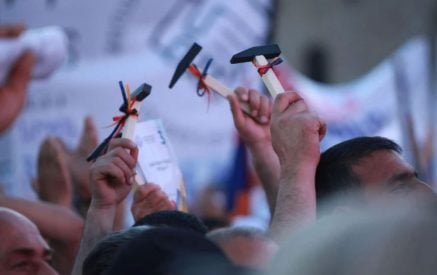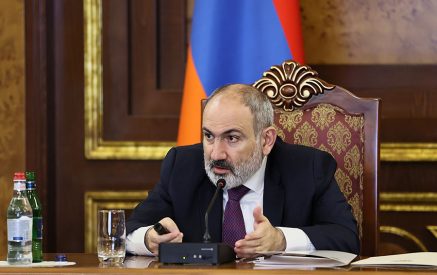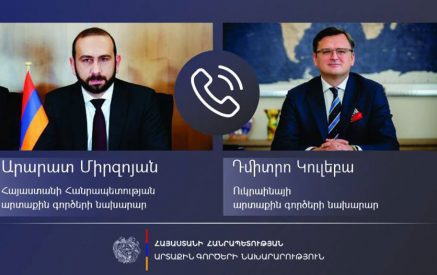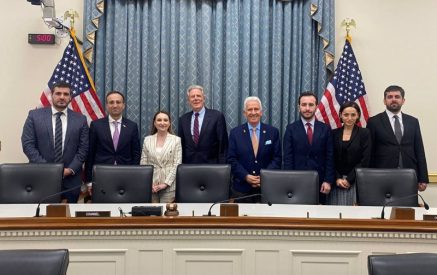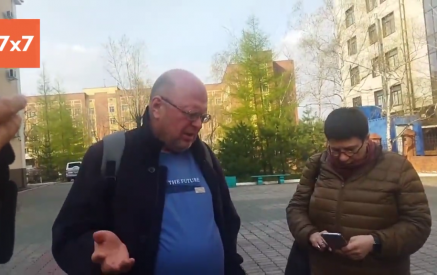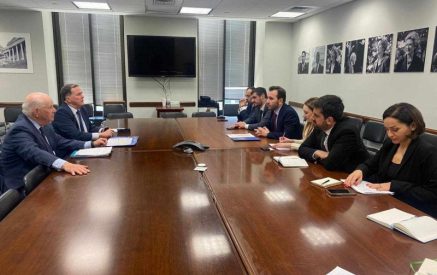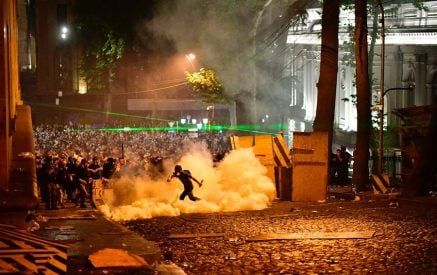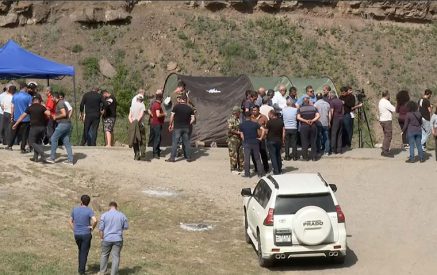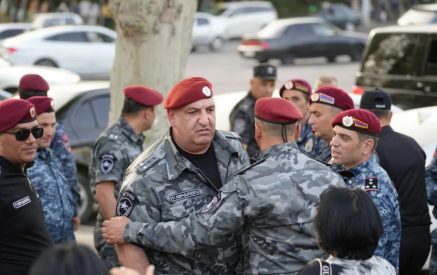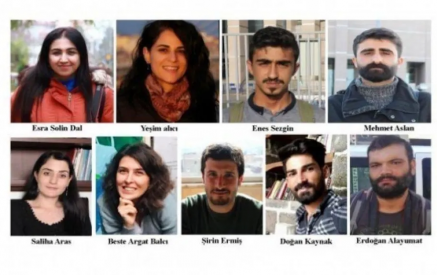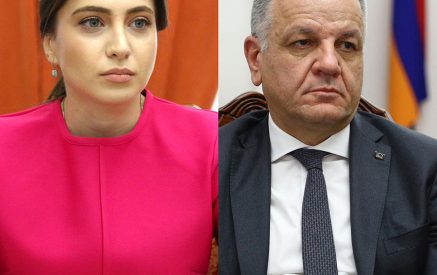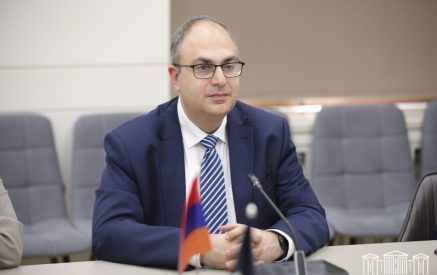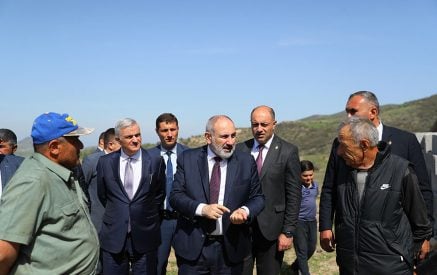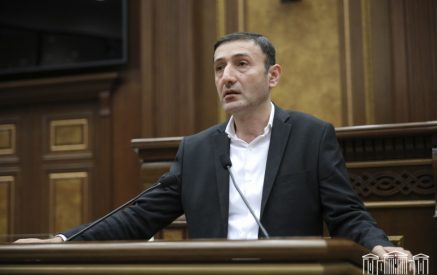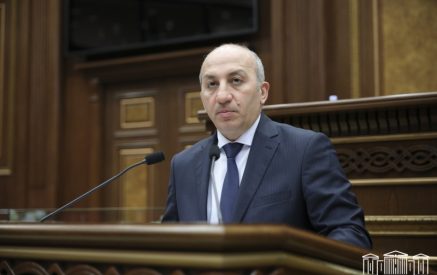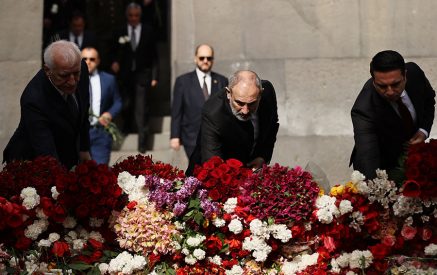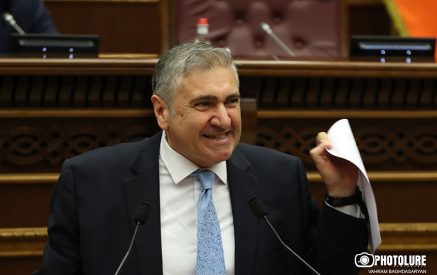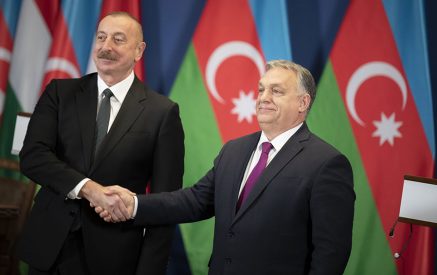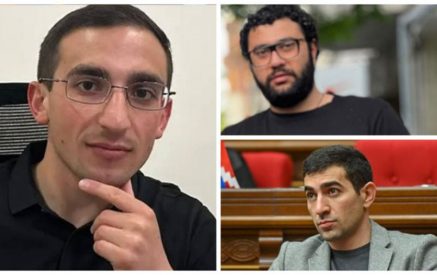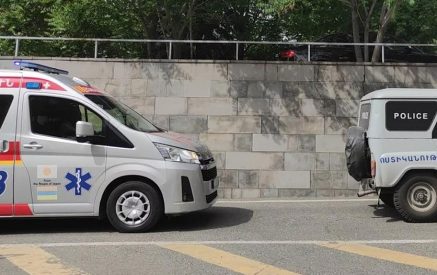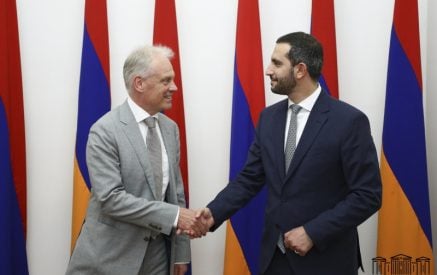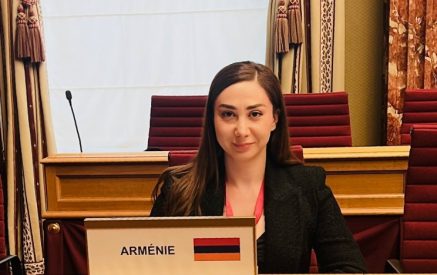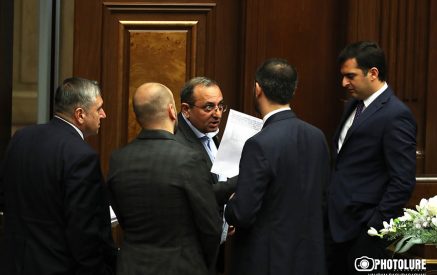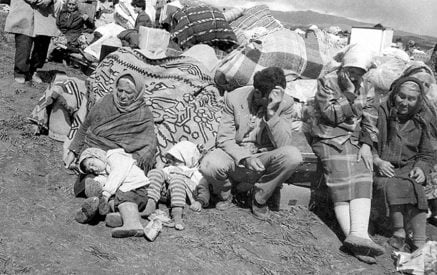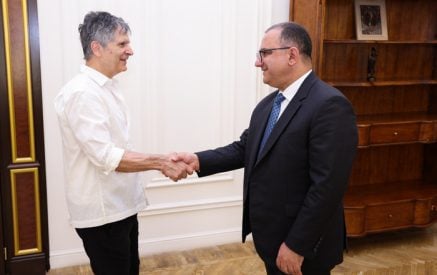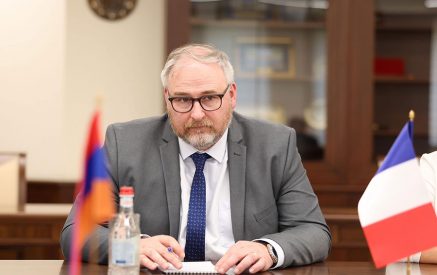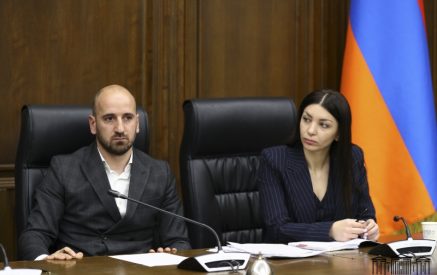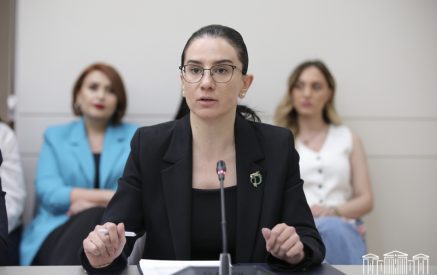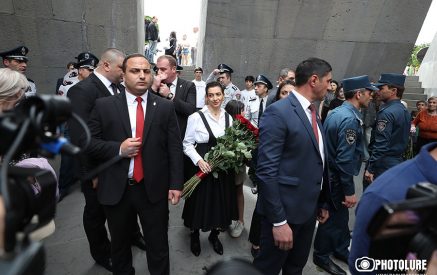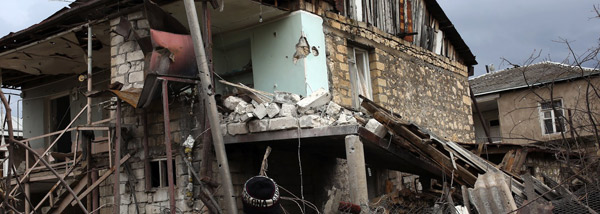FIDH situation note
As old as the Soviet Union collapse, one of the most disastrous conflicts in the region of the last 30 years, concerning the status of Nagorno-Karabakh[1], continues to kill. After an escalation of violence in April 2016, the deadliest since the ceasefireof1994, and a closed meeting between the Presidents of Armenia and Azerbaijan in May 2016 in Vienna, parties continue to accuse each other of cease-fire violations and no peace progress is in view.
In the beginning of April 2016, a new wave of armed hostilities in and around Nagorno-Karabakh in the South Caucasus resulted in dozens of casualties, including civilians. The exact figure was impossible to independently verify. According to the latest information available from the Armenian Ministry of Defense, 92 persons were killed between 2 and 5 April 2016, including four civiliansSix civilians[4] and 31 mility personnel[5] were reported killed on the Azerbaijani side during the same period.
This serious outbreak of violence in April 2016 is not the first one since the cease-fire agreement between Armenia, Nagorno-Karabakh de facto entity and Azerbaijan was signed in 1994. As no peaceful settlement of the conflict was found, the number of incidents violating the cease-fire both along the Nagorno-Karabakh Line of Contact and along the border between Armenia and Azerbaijan increased as time passed. In 2014-2015, shelling and outbursts of violence occurred on a daily basis with some serious escalations. Dozens of military personnel were killed, civilians were injured or killed, and civilian property was damaged. Reportedly, most civilian casualties were a result of shelling of their villages along the Armenian-Azerbaijan border last year, whereas military losses mostly occured along the Nagorno-Karabakh borderle
Read also
Despite the constant danger of exploding into a full-scale war and an alarming arms race between Armenia and Azerbaijan, the conflict continues to attract limited attention from the international community. The latter factor combined with the absence of a permanent monitoring mechanism to maintain the cease-fire and the lack of investigation into cease-fire violations contributed to the latest outbreak of military hostilities between 2 and 5 April 2016. The verbal cease-fire agreement reached on 5 April 2016 and reiterated in May 2016 in Vienna is reportedly violated by both parties on a daily basis, adding to the volatility of the situation. According to information from the Nagorno-Karabakh de facto Ministry of Defens, and confirmed by the Ministry of Defense of the Republic of Armenia, at least Nagorno-Karabakh de facto military personnel have been killed during the post-cease-fire period from 5 April to 31 May[6]. The Ministry of Defense of Azerbaijan reported the deaths of at least five[7] soldiers on the Nagorno-Karabakh Line of Contact since 5 April 2016. Unless the international community takes action, the conflict risks erupting full scale bringing further civilian casualties and violations of international humanitarian law, while further escalating the very fragile regional situation.
The absence of independent international observation entails a lack of credible sources and leads to rumors and propaganda being spread about the number of casualties and their nature. FIDH studied comprehensively both Armenian and Azerbaijan sources and, based on the figures and facts confirmed by both sides, considers the information regarding the deliberate targeting of civilians by all parties to the conflict to be accurate.
Attacks against civilians and civilian targets
Reports of civilian casualties and targeting of civilian properties, including schools, document what may constitute disproportionate and unlawful attacks under international law. These concerns were confirmed by the UN Commissioner for Human Rights Mr. Zeid Ra’ad Al Hussein in his speech on 13 June 2016[8].
The Azerbaijani side reported that as a result of the attacks, serious damage was also caused to private property and public infrastructures. According to the Ministry of Defense of Azerbaijan, 232 private houses and 99 electric poles, 3 electric substations, significant parts of water and gas pipes have been destroyed. Schools, hospitals and social institutions, including places of worship have reportedly been struck by guided missiles[9]. The de-facto Nagorno-Karabakh authorities, backed by the Armenian government, also reported significant civilian damage caused by the military action[10] that resulted in massive civilian displacement in Nagorno-Karabakh and in Armenia.[11] The Office of the Prosecutor General of the de-facto Nagorno-Karabakh declared 550 civilians victims of the recent military escalation.[12] Both sides reported civilian casualties, including children[13], and civilian injuries that also involved children[14]Due to continued shelling causing protracted instability and further destruction of property, many remain displaced. In a statement released on 20 June 2016, the UNHCR Representative in Armenia declared that while an increasing number of the displaced have considered returning, the UN continues to deliver aid to at least 1429 persons who remain displaced from de facto Nagorno-Karabakh[15]. Humanitarian protection of the displaced communities is needed for them to return to their homes.
FIDH reminds that the parties to the conflict should avoid military escalation. In any case and regardless of the fact that the territory’s status is not recognised or that there is an ongoing armed conflict, all parties must at all times distinguish between civilians and combatants, and between civilian and military targets, in order to protect the civilian population and their property from the attacks during the hostilities. The use of human shields is absolutely and unconditionally prohibited by both conventional and customary international humanitarian law.
Treatment of civilians, persons hors de combat and treatment of the deceased
Whereas some of the human losses reported might have occurred as a result of failure to take precautionary measures and assess the effects of the attack towards the civilian population, at least three elderly civilians, residents of Talish village in Nagorno-Karabakh were reportedly killed deliberately and their bodies mutilated when the Azerbaijani troops entered and took control over the village[16]. Ears of the above-mentioned three civilians were cut off Killing of civilians is prohibited both in the Geneva Conventions and as a norm of customary international humanitarian law. Arbitrary deprivation of life and murder of civilians are prohibited under international human rights law and this prohibition is non-derogatory and therefore applicable at all times[17].
On 4 April 2016, it was reported that Azerbaijani forces decapitated a soldier from the self-proclaimed Nagorno-Karabakh of Yezidi origin Kyaram Sloyan, who had been killed in combat. The video and pictures of his severed head later appeared on social networks. Soldiers and civilians were shown as holding up his head as a military trophy and a sign of victorious act. Later, reports appeared about two other beheaded soldiers of the army of the self-proclaimed Nagorno-Karabakh. In all three cases families later lodged an application before the European Court of Human Rights[18].
According to Nagorno-Karabakh de facto Ombudsman[19], Kyaram Sloyan’s head was returned and buried next to the soldier’s body while no action was taken by the Azerbaijani authorities with respect to returning the heads of the two other soldiers. Additionally to being absolutely prohibited by national and international law, such inhumane treatment reinforces the inter-ethnic hatred and contributes to further conflict escalation.
On April 8, 9, 10[20], and 20[21], 2016 the International Committee of the Red Cross (ICRC) facilitated a handover between the sides, of the bodies of those killed in combat along the Line of Contact. According to information provided by the Ministry of Defense of Armenia, bodies of at least 18 soldiers of the self-proclaimed Nagorno-Karabakh were transferred to Armenian side[22]. There were reports that the bodies were handed over mutilated[23]. For the time being, there is no possibility to confirm the reports of mutilation by an independent source, neither is it possible to affirm independently whether they were subjected to torture when alive. The Azerbaijani media reported similar crimes by the Armenian forces referring to the refusal of the Armenian side to return a slain body of an Azerbaijani soldier[24]. It was not possible to independently verify these reports, neither was this information publicly confirmed by the ICRC.
Non-verified and non-reliable information actively spread during the military conflict feeds the escalation and is a further show of the urgent need for an independent international monitoring and investigation.
If accurate and confirmed, these reports amount to war crimes. Torture, ill-treatment and mutilation of the dead is strictly prohibited under both conventional and customary international humanitarian law. FIDH urges both sides to impartially investigate these allegations, to bring those responsible to justice and to cooperate with international mediators ensuring the handover of soldiers’ bodies to their families.
FIDH calls on all parties to the conflict to:
- Respect and apply the provisions of the international humanitarian law and human rights law;
- Ensure full respect to the right to life and security of people affected by the conflict;
- Hold accountable those responsible for violations of international humanitarian and human rights law and fight impunity;
- Respect the 1994 ceasefire, refrain from using force, not promote the use of force, and end the arms race in the region;
- Refrain from promoting hate and war propaganda;
- Accept an independent fact-finding mission into the conflict zone and provide the members of the mission with full access to places and persons affected by the conflict.
FIDH urges Azerbaijan and Armenia to ratify the Rome Statute of the International Criminal Court (ICC).
FIDH calls on Azerbaijan to ratify two Additional Protocols (1977) to the Geneva Convention (1949).
[1] The region of Nagorno-Karabakh is the subject of an unresolved dispute between Azerbaijan, within the legal boundaries of which it lies, and its ethnic Armenian majority, backed by neighbouring Armenia. Azerbaijan has lost control over Nagorno Karabakh since the outbreak of the bloody war in 1988 which left the de facto state backed but not officially recognised by Armenia, and under control of ethnic Armenians when a truce was signed in 1994.
[2] See the official information reported by the Armenian Ministry of Defense on 13 April 2016, https://www.mil.am/hy/news/3990 (in Armenian only). See the English translation of the given article in the Armenian media on 13 April 2016 “MOD: Armenian side suffered overall 92 casualties”, https://news.am/eng/news/322142.html.
[3] See “Body of Armenian soldier transferred to Armenian side identified”, 20 April 2016, https://armenpress.am/eng/news/844286/body-of-armenian-soldier-transferred-to-armenian-side-identified.html.
[4] See “Information on further violations of international humanitarian law by Armenia in the context of intensification of the armed conflict between Armenia and Azerbaijan since April 2, 2016”, 6 April 2016, https://www.mfa.gov.az/news/879/4030.
[5] See “Baku announced the death of 31 soldier in the zone of Nagorno-Karabakh conflict” (in Russian), 6 April 2016, https://www.kavkaz-uzel.ru/articles/280377/. See also official information from the Ministry of Defense of Azerbaijan: “Latest information on the situation on the frontline”, 2 April 2016 (in Azeri; confirmation of 12 soldiers killed), https://mod.gov.az/index2.php?content=news/2016/20160402_melumat_cebheson; “Latest information from the fontline”, 4 April 2016, https://mod.gov.az/index2.php?content=news/2016/20160404_cebheson#ru; “The latest update on the frontline”, 5 April 2016, https://mod.gov.az/index2.php?content=news/2016/20160405_melumat_cebhe.
[6] According to the information gathered by hra.am from official press-releases, published by the Armenian Ministry of Defence (https://www.mil.am) and NKR Defense Army (nkrmil.am).
[7] See statements of the Ministry of Defense of Azerbaijan: “Soldiers killed” (in Azeri), 3 May 2016, https://mod.gov.az/index2.php?content=arxiv/2016/may-16%; “Killed soldier of Armed Forces of Azerbaijan”, 8 May 2016, https://mod.gov.az/index2.php?content=news/2016/20160508_shehid; “The wounded officer of Azerbaijan Armed Forced died”, 9 May 2016, https://mod.gov.az/index2.php?content=news/2016/20160509_shehid; “Killed soldier of Armed Forces of Azerbaijan”, 13 May 2016, https://mod.gov.az/index2.php?content=news/2016/20160513_shehid#en, “Soldier of Azerbaijani Armed Forces was killed during the violation of ceasefire by Armenia, which does not attach importance to the negotiations on conflict”, 17 May 2016, https://mod.gov.az/index2.php?content=news/2016/20160517_shehid.
[8] “Hate is being mainstreamed’ – global update by the High Commissioner at the 32nd session of the Human Rights Council”, 13 June 2016, https://www.ohchr.org/EN/NewsEvents/Pages/Media.aspx#sthash.YYDsS1NA.dpuf.
[9] See “Information on further violations of international humanitarian law by Armenia in the context of intensification of the armed conflict between Armenia and Azerbaijan since April 2, 2016” (available in English), 6 April 2016, https://www.mfa.gov.az/news/879/4030.
[10] Damage to a gas pipeline and to residential property was reported by the Ombudsman office of the fe-facto Nagorno Karabakh Republic, see https://www.ombudsnkr.am/Interim_Public_Report_NKR_Omb_FINAL.pdf, p.19-20. According to the de facto General Prosecutor of Nagorny Karabakh Karen Gabrielian, 850 persons suffered property and psycological damages, more than 300 houses were damaged in Nagorny Karabakh, but also a church, 4 schools, 3 kindergardens, farms, adiministrative buildings and electrostations, gaz lines and many more: https://news.am/rus/news/334484.html
[11] See “At Least 3,000 Artsakh Civilians Evacuated Due to Fighting, Says Red Cross Official” (in English), 5 April 2016, https://hetq.am/eng/news/67076/at-least-3000-artsakh-civilians-evacuated-due-to-fighting-says-red-cross-official.html. In a communication released on 11 April 2016, the UNHCR reported on “hundreds of displaced people” in Nagorno Karabakh: “UNHCR seeks protection for those displaced by Nagorno Karabakh conflict”, https://www.unhcr.ie/news/irish-story/unhcr-seeks-protection-for-those-displaced-by-nagorno-karabakh-conflict.
[12] “The Office of the Prosecutor general of the Nagorno Karabakh: more than 550 Karabakh inhabitants suffered from the Azerbaijani agression”, 28 April 2016, https://www.panarmenian.net/rus/news/211275/.
[13] As of 6 April 2016, the Ministry of Defense of Azerbaijan reported the death of six civilians, including 2 children under 16, and injury of 26 civilians, see “Information on further violations of international humanitarian law by Armenia in the context of intensification of the armed conflict between Armenia and Azerbaijan since April 2, 2016”, 6 April 2016, https://www.mfa.gov.az/news/879/4030. As of 13 April 2016, the Ministry of Defense of Armenia reported death of 4 civilians, see Note 2.
[14] The Armenian side reported injury of two children: See “Statement of Armenia on the 7th Forum of the UN Alliance Civilisations to be held in Baku” (in English), 20 April 2016, https://www.mfa.am/en/interviews/item/2016/04/20/stat_unaoc/ and See “Condition of children wounded in Azeri shelling assessed as stable” (in English), 3 April 2016, https://www.panarmenian.net/eng/news/209503/.
[15] See the statement by the UNHCR Representative in Armenia on 20 June 2016, https://www.un.am/en/news/441.
[16] See “Azerbaijani Soldiers Execute Elderly Armenian Couple in Artsakh; Then Cut Off Their Ears” (in English), 3 April 2016, https://hetq.am/eng/news/66976/azerbaijani-soldiers-execute-elderly-armenian-couple-in-artsakh-then-cut-off-their-ears.html. See also the list of criminal cases opened by the de facto Prosecutor’s office of the Nagorny Karabakh Republic. The list includes two cases opened following the murder of the given elderly couple Khalafyan Valerik Vardanovich and Khalafyan Maroussia Arsievna: genprocnkr.am/2011-02-18-09-13-34/2011-02-18-09-17-55/564-2016-04-14-06-04-15.
[17] See International Covenant on Civil and Political Rights (CCPR), Article 6(1) and 4(2).
[18] See “Artak Zeynalyan: Families of beheaded soldiers apply to ECHR”, 25 April 2016,, https://www.panorama.am/en/news/2016/04/25/Artak-Zeynalyan/1568852.
[19] Interim public report of the de-facto ombudsman of Nagorny-Karabakh: https://www.eoi.at/d/Presse/Nagorno%20Karabakh/Interim_Public_Report_NKR%20Omb._FINAL.pdf
[20] See “Nagorno-Karabakh ICRC facilitates retrieval and transfer of those killed in action, 10 April 2016, https://www.icrc.org/en/document/nagorno-karabakh-icrc-facilitates-retrieval-and-transfer-those-killed-action
[21] See “Nagorno-Karabakh ICRC facilitates transfer of body retrieved from Line of Contact”, 20 April 2016, https://www.icrc.org/en/document/nagorno-karabakh-icrc-facilitates-transfer-body-retrieved-lline-ccontact.
[22] See “The announcement by the Ministry of Defence of the Republic of Armenia”, https://www.mil.am/en/news/3983.
[23] See “The Statement of the State Commission on Prisoners of War, Hostages and Missing Persons of the de facto Nagorno-Karabakh Republic” (in English), 11 April 2016, https://www.nkr.am/en/news/2016-04-11/806/;
[24] See “Armenia refuses to return dead body of Azerbaijani soldier” (in English), 17 April 2016, https://www.azernews.az/aggression/95385.html.

